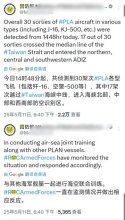It won’t during terminal phase. First engine first in the starting phase and second engine fires during mid phase.
Wouldn't it be better to have the second pulse during the terminal phase?
So the first pulse gets the PL-15 to a ballistic trajectory which allows for maximum range for a first pulse.
Then the second pulse is for terminal targeting, as unpowered missiles can be outmanoeuvred a lot easier.
--
If the PL-15 were to fire mid-phase, the missile still has a fair amount of kinetic energy, plus gravity will provide additional impulse on the way down anyway.
But a mid-phase pulse would make sense if the target is too far away or has changed location, so needs a second pulse just to get enough range

